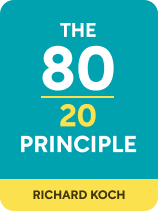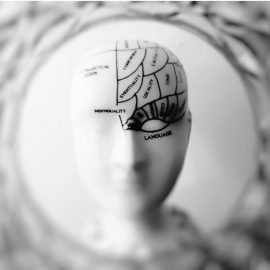

This article is an excerpt from the Shortform book guide to "The 80/20 Principle" by Richard Koch. Shortform has the world's best summaries and analyses of books you should be reading.
Like this article? Sign up for a free trial here .
What is the Pareto rule? How does applying the 80/20 rule help you increase your productivity and happiness?
The Pareto 80/20 rule states that 80% of your outcomes result from just 20% of the effort you put in. According to Richard Koch, this principle is at work in every aspect of your life, including your career and relationships.
Let’s examine what the Pareto 80/20 rule is and why it matters.
What Is the 80/20 Principle?
The 80/20 Principle dictates that 80% of outputs stem from 20% of inputs. This unbalanced relationship, Koch says, shows up in various areas of life. For example, in any given company, we can reliably predict that 20% of products account for 80% of profits, 20% of customers account for 80% of sales revenue, and 20% of employees account for 80% of results. Similarly, in our personal lives, we owe roughly 80% of our achievements to 20% of the time we invest, 80% of our happiness to 20% of our life experiences, and 80% of the value we derive from relationships to 20% of the people in our lives.
Koch assures us that we can apply the Pareto 80/20 rule to clear out the waste in our lives and devote our energy to the people and activities that bring us joy and success.
According to Koch, most of us waste tremendous energy and effort in our work lives on things that don’t ultimately matter. We respond to every email request, accept every meeting invitation, and devote our precious time to people who don’t advance our career development. As a result, Koch says, trivial concerns dominate our days, which leads to widespread inefficiency, dissatisfaction, and missed opportunities. Instead, Koch says we should focus on the 20% of tasks responsible for 80% of our productivity.
We also waste energy and effort in our personal lives, according to Koch. We fill our days with errands and unfulfilling distractions like social media, and we spend too much time with people we don’t like or who drain our energy. As a result, Koch says, we have an underlying sense of unhappiness. Instead, Koch says we should focus on the 20% of life activities that are responsible for 80% of our happiness.
However, Koch asserts that when people do focus their efforts on the things that matter, they prosper. People are happier and more productive doing things they actually enjoy. Companies are more streamlined and profitable and are able to deliver greater value to customers.
Evidence for the Validity of the 80/20 Principle
How do we know the 80/20 Principle is real? What factors explain it? Koch says the causes are difficult to isolate because there are many interdependencies. For example, two employees may have the exact same training but differ greatly in their contributions to a company. Is the performance gap due to different working conditions, levels of motivation, mental distress, support from colleagues, or something else entirely? Koch says it’s impossible to know, and ultimately it doesn’t matter.
We can verify the reality of the 80/20 Principle by observing its effects, and Koch encourages us to test his assertions against our experience. What we will find—reliably and consistently—is that some inputs have a huge influence whereas others are relatively insignificant. This unbalanced relationship will persist, Koch says, unless we make a determined effort to change it.
| Improved Analytics Make It Possible to Diagnose and Predict Outcomes Although Koch says it’s impossible to precisely pinpoint the causes behind any given 80/20 relationship, that may be changing. Advances in machine learning and analytics are enabling organizations to extract more valuable insights from greater volumes and variety of data. For example, digitization of business processes and customer experiences allows companies to answer very targeted questions: What 20% of customer experience elicits 80% of satisfaction? What 20% of company communication creates 80% of its impact among employees? Also, finer-grained analytics on product features—not just products themselves—are guiding companies to execute data-driven redesigns. By removing undesirable or little-used features and enhancing desirable features, companies are able to reduce costs and increase value delivered to customers. Additionally, rather than looking at each variable in isolation, advanced analytics make it possible to discern how separate forces within a company intersect and overlap in ways that either build or diminish returns. Given that hundreds, even thousands, of variables can affect any outcome, cross-sectional analyses like this are essential to unravel complicated interactions. Companies can then use data to combine the best attributes from multiple areas, amplifying performance in novel ways. Thus, these advances are opening pathways for companies to use data to not just specify causes of particular outcomes but to predict and prescribe the most promising actions for the future. As analytics continue to become more sophisticated, businesses will likely find more ways to supercharge the effects of the 80/20 Principle that Koch describes. |

———End of Preview———
Like what you just read? Read the rest of the world's best book summary and analysis of Richard Koch's "The 80/20 Principle" at Shortform .
Here's what you'll find in our full The 80/20 Principle summary :
- How you can work less, earn more, and multiply your happiness
- What the 80/20 Principle is and why it matters
- The mindset shifts you must make to take advantage of the 80/20 Principle






